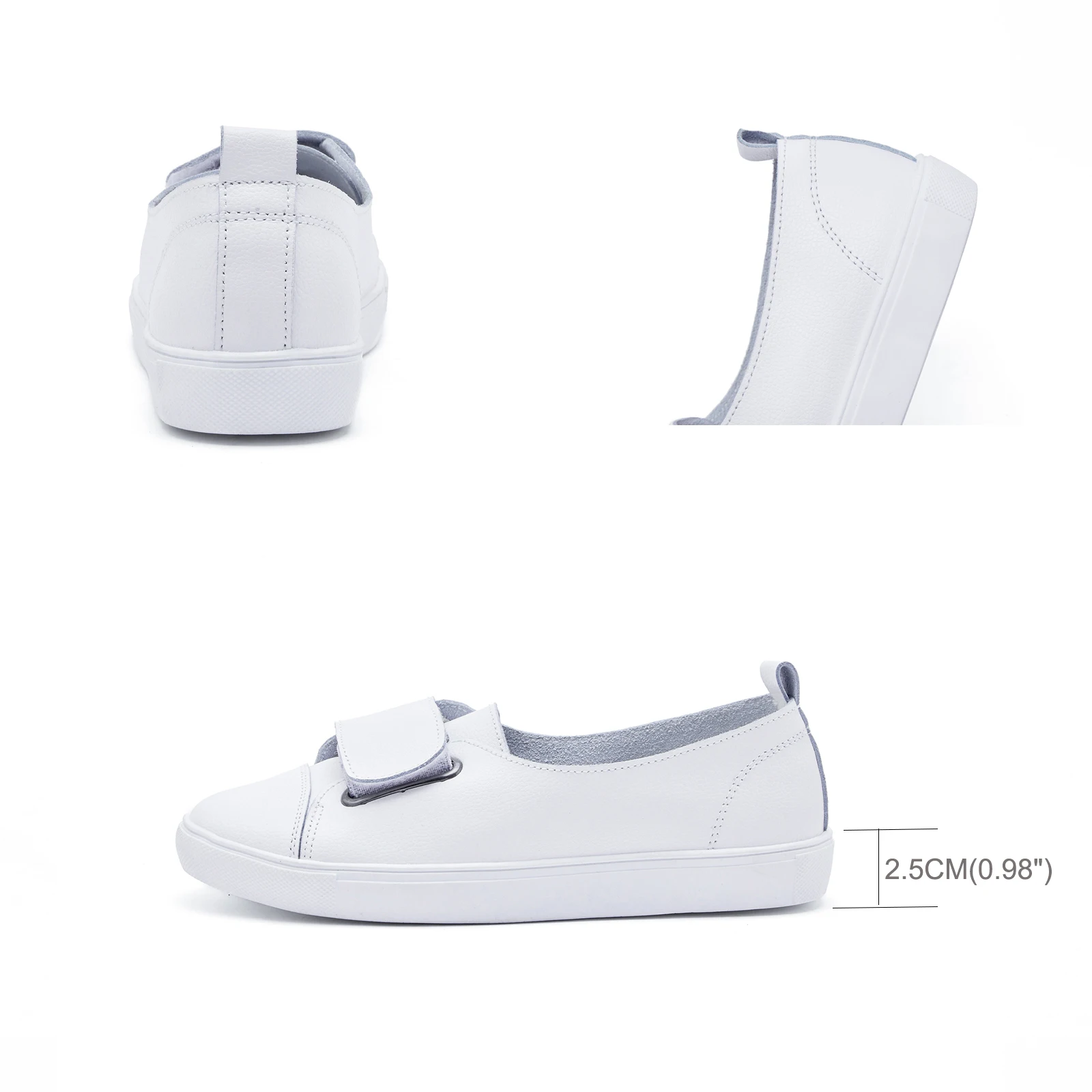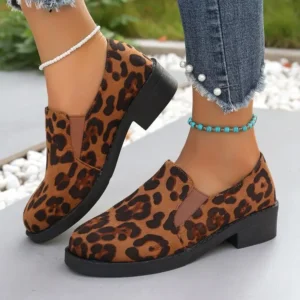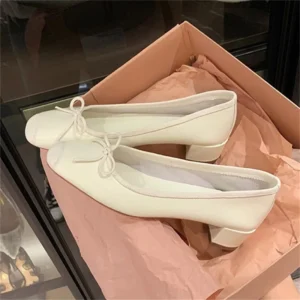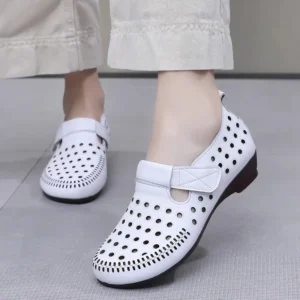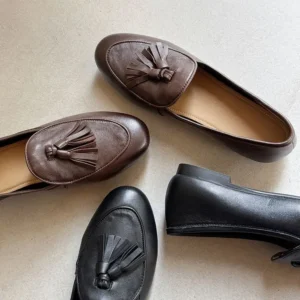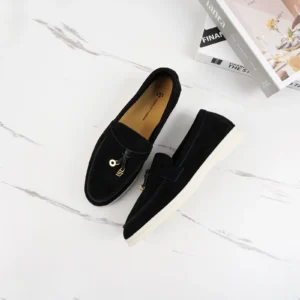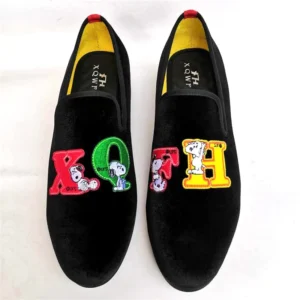Understanding the Materials: Leather vs. Suede
When choosing quality footwear, handbags, or other accessories, the material plays a crucial role in determining not just the appearance, but also the maintenance requirements. Understanding the fundamental differences between leather and suede is essential before making your purchase decision.
Leather is a durable material created from animal hides that undergo a tanning process to preserve and strengthen them. Full-grain leather retains the natural grain pattern of the hide, while top-grain leather has the uppermost layer sanded away to remove imperfections. The material’s surface is typically smooth, finished, and has a protective layer that helps repel moisture and stains.
Suede, on the other hand, is created from the inner split of the animal hide. Instead of having a smooth surface, suede features a fuzzy, napped finish created by raising and brushing the fibers. This distinctive texture gives suede its signature soft, velvet-like appearance and feel that many find appealing.
The structural differences between these materials directly impact their care requirements. Leather’s finished surface creates a natural barrier against dirt and moisture, while suede’s raised fibers can trap particles and absorb liquids much more readily. These fundamental differences mean that each material requires its own specific approach to maintenance.
Proper understanding of leather vs suede loafer care is essential for anyone investing in quality footwear. The care approaches differ because of these structural variations – leather generally needs conditioning to prevent drying and cracking, while suede requires regular brushing and more delicate cleaning techniques.
The Quick Answer: Which Is Easier to Maintain?
Leather is generally easier to maintain than suede. This straightforward answer stems from several key factors that make leather more forgiving and less demanding in terms of regular care and protection against everyday hazards.
Here’s why leather typically requires less maintenance effort:
* Leather’s smooth, finished surface naturally repels water and many substances that would immediately stain suede
* Basic leather cleaning often involves simply wiping with a damp cloth, while suede requires special brushes and techniques
* Leather tends to be more durable and resistant to scratching and scuffing in daily use
* Leather items typically need less frequent maintenance to maintain their appearance
That said, proper care of either material will significantly extend its lifespan. With appropriate maintenance routines, both leather and suede products can remain beautiful for many years. The difficulty level can also vary depending on the specific type of leather or suede, as well as any special finishes or treatments applied during manufacturing.
For those seeking comprehensive information, our complete guide to leather and suede care provides detailed instructions for maintaining both materials. Remember that while leather may be less demanding overall, both materials reward proper attention with lasting beauty and durability.
Why Leather Is Generally Easier to Care For
Leather’s natural properties contribute significantly to its reputation for being lower maintenance than suede. These inherent characteristics create a material that’s more forgiving of everyday use and environmental exposure.
Leather’s primary advantage comes from its finished surface structure. Unlike suede’s open fibers, properly finished leather has a relatively non-porous surface that resists absorption of liquids and particles. This means that when you spill water or other substances on leather, you often have valuable time to wipe them away before they can penetrate and cause staining.
The natural oils present in quality leather also provide built-in protection. These oils help the material remain supple while creating a subtle barrier against environmental factors. Additionally, leather’s smooth surface doesn’t trap dust and dirt particles the way suede’s raised fibers do, making regular maintenance simpler.
Leather’s resilience to physical stress is another advantage in the care department. Minor scuffs and scratches on leather can often be buffed out or diminished with conditioning, while similar damage to suede can permanently alter its appearance.
• Leather can typically withstand light rain exposure without immediate damage
• Most dirt and dust simply wipe off leather rather than becoming embedded
• Conditioning products easily absorb into leather to maintain its suppleness
• Leather’s structure makes it less prone to crushing or matting over time
The leather vs suede maintenance guide offers deeper insights into these differences. Understanding these inherent properties helps explain why leather items generally require less frequent and less specialized care to keep them looking their best.
Basic Leather Maintenance: Simple Daily Care
Keeping your leather items in excellent condition doesn’t require extensive daily effort. Simple, regular maintenance can prevent most common issues and significantly extend the life of your leather goods.
For daily care, a quick wipe with a soft, dry cloth is often all that’s needed to remove surface dust and prevent buildup that could eventually damage the finish. For leather items worn frequently, like women’s leather flat loafers, this simple habit can maintain their appearance with minimal effort.
When minor scuffs or scratches appear, a gentle buff with a soft cloth is often sufficient to smooth them out. For slightly more noticeable marks, try gently rubbing with your finger – the natural oils from your skin can help diminish minor blemishes on quality leather.
Avoid these common mistakes in daily leather care:
* Using harsh chemicals or household cleaners that can strip leather’s natural oils
* Placing leather items near direct heat sources, which can cause drying and cracking
* Allowing dirt to accumulate, which can abrade the leather’s surface over time
* Using silicone-based products that can build up and damage leather over time
For most leather items, a more thorough cleaning and conditioning routine only needs to be performed every few months, depending on use frequency and environmental conditions. This infrequent deep maintenance requirement is another factor that makes leather relatively easy to care for compared to suede.
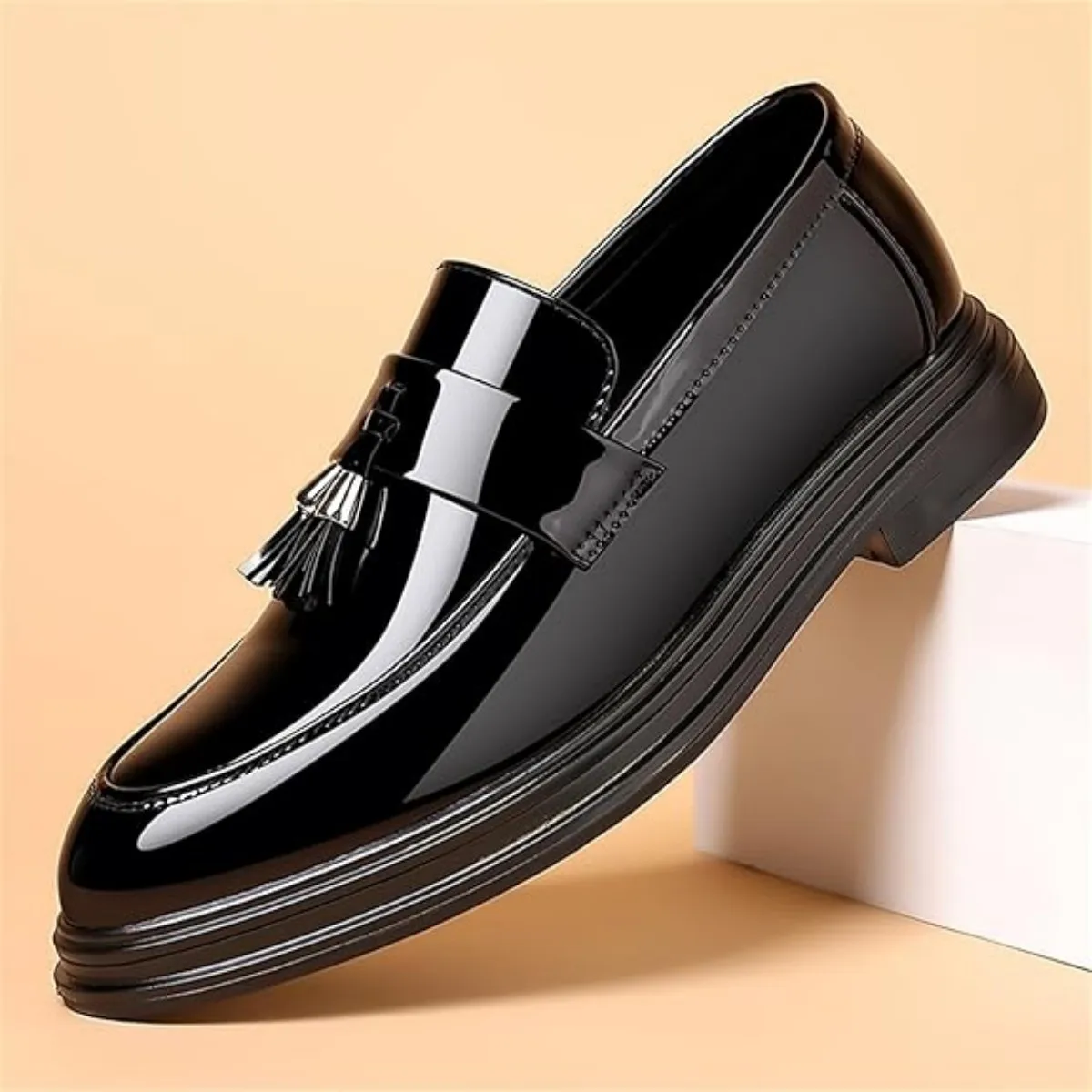
Deeper Leather Care: Cleaning and Conditioning
While basic daily maintenance keeps leather looking good, periodic deeper cleaning and conditioning are essential for preserving its beauty and extending its lifespan. This more thorough care routine addresses accumulated dirt and replenishes moisture that naturally depletes over time.
When leather begins to look dull or feel stiff, it’s time for a proper cleaning. Start with a leather-specific cleaner – avoid household soaps which can strip away natural oils. Apply the cleaner with a soft cloth using gentle circular motions, then wipe away residue with a clean, slightly damp cloth. Allow the leather to dry naturally, away from direct heat sources.
Conditioning is the critical next step after cleaning. Leather conditioners replenish essential oils, prevent cracking, and maintain the material’s natural flexibility. Choose a conditioner appropriate for your specific type of leather, as different formulations work best for different finishes. Apply a small amount with a soft cloth, working it into the leather with circular movements, then allow it to absorb for the time recommended on the product (typically a few hours).
For items like women’s leather penny loafers that see frequent wear, conditioning every 3-6 months helps maintain their suppleness and appearance. Less frequently worn items may only need conditioning once or twice a year.
Quality leather conditioners often contain natural oils and waxes that penetrate the leather’s structure to restore moisture from within. This deep nourishment is why properly conditioned leather develops a rich patina over time rather than drying out and cracking.
Those interested in maintaining their leather goods over the long term should explore our guide to long-term leather footwear care for detailed recommendations on seasonal maintenance routines.
Protecting Leather: Prevention Is Key
Preventative care is the most effective strategy for maintaining leather’s appearance and extending its lifespan. Applying appropriate protectants before exposing leather to potential damage saves significant time and effort compared to attempting repairs afterward.
Leather protector products create an invisible barrier that repels water, oil, and dirt without changing the material’s appearance or feel. These products come in various forms:
- Spray protectors work well for larger surfaces and hard-to-reach areas
- Cream protectors often provide deeper protection and may add conditioning benefits
- Wax-based protectors offer maximum water resistance for harsh conditions
When applying protector sprays, hold the can 6-8 inches away from the leather surface and apply a light, even coat. Multiple thin layers provide better protection than a single heavy application. Allow each layer to dry completely before applying the next or wearing the item.
For optimal protection, reapply these products regularly based on wear frequency and environmental exposure. Items worn daily in challenging conditions may need reapplication monthly, while occasional-use pieces might need protection refreshed only seasonally.
Climate considerations significantly impact protection needs. In rainy regions, water-repellent properties become essential, while in sunny areas, UV protection helps prevent fading and drying. For comprehensive care advice tailored to different leather items, our ultimate guide to pristine leather loafers provides specific techniques for keeping footwear looking new.
Why Suede Requires More Meticulous Care
Suede’s distinctive texture and appearance come with inherent care challenges that make it more demanding to maintain than smooth leather. Understanding these challenges explains why suede requires more diligent and specialized attention.
The defining characteristic of suede – its raised nap of tiny fibers – creates its greatest vulnerability. These fibers act like tiny hooks that catch and hold dust, dirt, and debris. While a quick wipe cleans smooth leather, particles become trapped within suede’s texture, requiring special brushing techniques to remove effectively.
Water is particularly problematic for suede. When liquid contacts suede, it’s quickly absorbed into the material rather than beading on the surface as it would with finished leather. This rapid absorption means less time to address spills before they cause staining. Water exposure often leaves noticeable marks as the material dries unevenly, with the nap becoming matted or discolored in affected areas.
Oil and grease present even greater challenges, as they not only stain the color but can permanently alter the texture of the napped surface. Even touching suede with hands that have natural skin oils can leave marks over time.
Suede’s color also tends to fade more quickly with sun exposure and general wear. The open fiber structure means dyes aren’t as protected as they would be in finished leather, resulting in more noticeable color changes over time.
For those who own suede footwear, learning about protecting suede loafers from water is essential knowledge that can prevent many common damage scenarios. While suede’s maintenance demands are higher, many enthusiasts feel its unique aesthetic qualities justify the additional care requirements.
Essential Tools for Proper Suede Care
Unlike smooth leather, which can often be maintained with simple cloths and basic products, suede requires specialized tools designed to work with its unique texture. Having the right equipment makes suede maintenance significantly more effective and helps preserve its distinctive appearance.
The suede brush is the most essential tool in your care kit. Different types serve specific purposes:
- Brass-bristled brushes help restore severely matted nap and remove stubborn stains
- Rubber-tipped brushes or crepe erasers lift dirt and light stains without damaging fibers
- Soft bristle brushes are ideal for regular maintenance and gentle cleaning
- Multi-sided brushes combine different textures for versatile care
Suede erasers (sometimes called suede blocks) are specialized tools designed to remove spots and stains. They work by gently abrading the surface to lift away contaminants. Unlike regular erasers, they’re formulated specifically for use on suede without damaging the delicate nap.
Special suede shampoos and cleaners are formulated to clean without over-wetting the material. These products help remove deeper dirt while minimizing the water exposure that can damage suede.
Perhaps most important are quality suede protector sprays. These create an invisible barrier that repels water and stains without changing suede’s appearance or texture. Unlike leather protectors, these are specially formulated to work with suede’s open fiber structure.
Investing in proper suede care tools represents an additional cost beyond what’s typically needed for leather care. However, these specialized tools are essential for maintaining the material’s appearance. For recommendations on quality care products for both materials, visit our guide to the best products for loafer care.
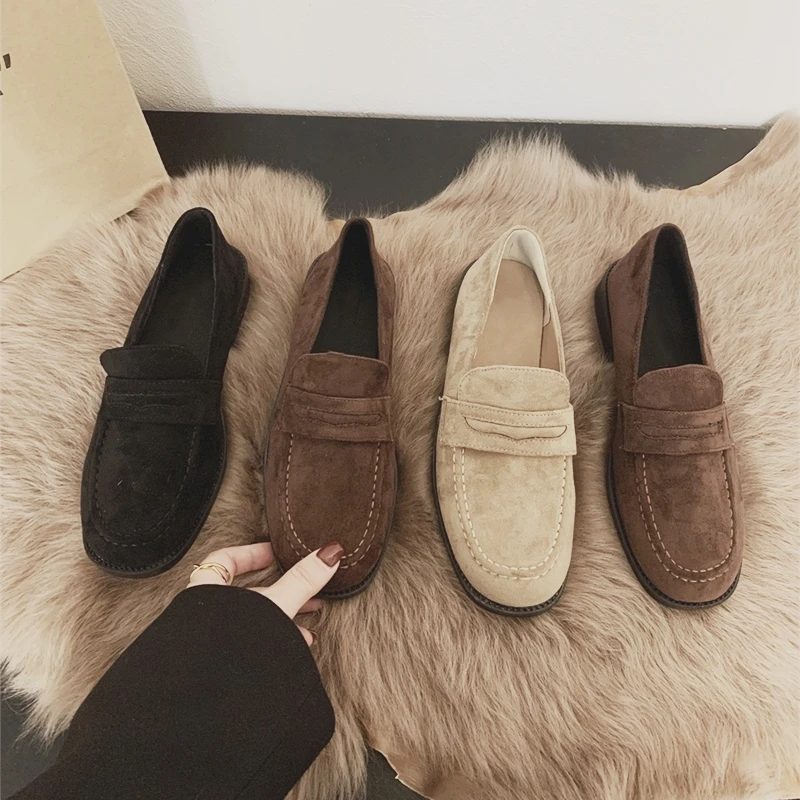
Routine Suede Maintenance: Daily and Weekly Care
Maintaining suede’s beautiful appearance requires more frequent attention than leather. Establishing a regular care routine helps prevent minor issues from becoming permanent damage.
Daily brushing is the foundation of proper suede care. Even when suede appears clean, invisible particles settle into its nap. Using a soft suede brush in gentle, consistent strokes helps remove these particles before they become embedded. Always brush in the same direction as the nap (the natural lay of the fibers) to maintain the material’s consistent appearance.
For suede footwear like women’s suede flat loafers, brushing should ideally happen after each wear. This removes surface dirt and restores the nap that becomes flattened during wear. For items worn frequently, a quick 30-second brush can prevent more time-consuming deep cleaning later.
Proper storage is equally important for suede maintenance. Unlike leather, which can often be wiped clean if dust accumulates, suede items should be stored in dust bags or boxes to prevent particles from settling into the nap. For footwear, using shoe trees helps maintain shape while allowing air circulation that prevents moisture buildup.
Weekly maintenance should include a more thorough inspection and brushing with appropriate tools:
* Use a soft brush for general maintenance
* Address any flattened areas with slightly firmer bristles
* Check for spots or stains that might need targeted treatment
For comprehensive guidance specifically tailored to footwear, our care guide for suede loafers provides detailed instructions for keeping these delicate items looking their best. Following these routine practices significantly reduces the need for more intensive cleaning treatments.
Cleaning Suede: Addressing Stains and Spots
When suede encounters stains or spots, quick and proper response is essential to prevent permanent damage. The cleaning approach differs significantly from leather, requiring specific techniques based on the type of stain.
For dry stains like dust or dirt that have settled into the nap:
1. Start with a soft suede brush to loosen particles
2. For stubborn dry spots, use a suede eraser with gentle pressure
3. Brush again to restore the nap after erasing
4. Avoid pressing too hard, which can flatten or damage the fibers
Wet stains require a different approach:
1. Blot immediately with an absorbent cloth or paper towel – never rub
2. Allow to dry completely away from direct heat
3. Once dry, gently brush to restore the nap
4. For water stains that leave marks, a light mist of water over the entire surface followed by proper drying and brushing can create a more uniform appearance
Oil-based stains present the greatest challenge:
1. Apply cornstarch or talcum powder to fresh oil stains to absorb excess oil
2. Let the powder sit for several hours or overnight
3. Brush away the powder and assess the stain
4. For remaining marks, use a specialized suede cleaner designed for oil stains
When dealing with salt stains common during winter:
1. Mix equal parts water and white vinegar
2. Dampen a cloth with the solution – not the suede directly
3. Gently dab at the salt marks
4. Allow to dry completely, then brush to restore the nap
For women’s suede penny loafers that encounter various conditions, having these cleaning techniques ready can save your footwear from permanent damage. When stains persist despite proper home treatment, professional cleaning may be necessary to preserve the material’s appearance.
Women's Comfortable Flat Loafers, Women's Leopard Print Loafers, Women's Low Heel Loafers
$82.50 Select options This product has multiple variants. The options may be chosen on the product pageWomen's Block Heel Loafers, Women's Square Heel Loafers, Women's Square Toe Flat Loafers
Price range: $73.61 through $86.41 Select options This product has multiple variants. The options may be chosen on the product pageWomen's Comfortable Flat Loafers, Women's Leather Flat Loafers, Women's Round Toe Flat Loafers
$124.88 Select options This product has multiple variants. The options may be chosen on the product pageWomen's Black Flat Loafers, Women's Black Penny Loafers, Women's Classic Tassel Loafers
$194.28 Select options This product has multiple variants. The options may be chosen on the product pageWomen's Loafer Mules, Women's Suede Flat Loafers
$190.23 Select options This product has multiple variants. The options may be chosen on the product pageWomen's Classic Tassel Loafers, Women's Suede Penny Loafers
Price range: $133.16 through $147.56 Select options This product has multiple variants. The options may be chosen on the product page
Protecting Suede: Critical Prevention Measures
Given suede’s vulnerability to damage, preventative protection is absolutely essential – even more so than with leather. Proper protection can dramatically reduce maintenance needs and extend the life of suede items.
Suede protector sprays create an invisible barrier that repels water, oil, and stains without altering the material’s appearance or soft hand feel. Applying these products correctly is crucial:
- Clean and brush the suede thoroughly before application
- Hold the spray 6-8 inches away from the surface
- Apply in light, even coats rather than saturating the material
- Allow each coat to dry completely (typically 15-30 minutes)
- Apply at least two coats for optimal protection
For maximum effectiveness, reapplication should be more frequent than with leather protectors. Items worn regularly may need reapplication every 2-4 weeks, while seasonal items should be retreated before each season of use.
Environmental factors significantly impact protection needs. In rainy seasons, more frequent application provides crucial water resistance. During winter, protection against salt and slush becomes particularly important for maintaining suede’s appearance.
Even with the best protection, suede remains more vulnerable than leather. Quality protector sprays significantly improve resilience but cannot make suede as carefree as smooth leather. Understanding how to wear loafers in office environments can help minimize exposure to damage-causing situations while still enjoying your suede footwear.
Remember that prevention extends beyond protective sprays – being mindful of weather conditions and potential exposure to spills is equally important for preserving suede’s beauty.
Side-by-Side Comparison: Suede vs. Leather Care
To clearly illustrate the differences in maintenance requirements between these two materials, let’s examine them side by side across key factors:
| Care Aspect | Leather | Suede |
|---|---|---|
| Water/Stain Resistance | Naturally resistant; spills can often be wiped away | Highly absorbent; stains quickly and easily |
| Cleaning Method | Simple wiping with damp cloth for most cleaning | Requires specialized brushes, erasers, and techniques |
| Maintenance Frequency | Basic care weekly; conditioning 2-4 times yearly | Daily/weekly brushing; monthly deep cleaning |
| Required Tools | Soft cloths, basic conditioner, protector spray | Specialized brushes, erasers, cleaners, protector spray |
| Care Product Costs | Moderate; basic kit $20-40 | Higher; comprehensive kit $40-75 |
| Professional Care Needs | Rarely needed except for severe damage | May be needed for stubborn stains or restoration |
| Average Care Time | 5-10 minutes weekly + occasional conditioning | 15-20 minutes weekly + more intensive spot treatments |
This comparison clearly demonstrates why leather generally requires less time, effort, and specialized knowledge to maintain. The loafer material comparison guide provides even more detailed analysis of these differences across various footwear styles.
While leather’s maintenance needs are less demanding, both materials can remain beautiful for years with proper care. The choice ultimately depends on your aesthetic preferences balanced against your willingness to commit to the appropriate care routine.
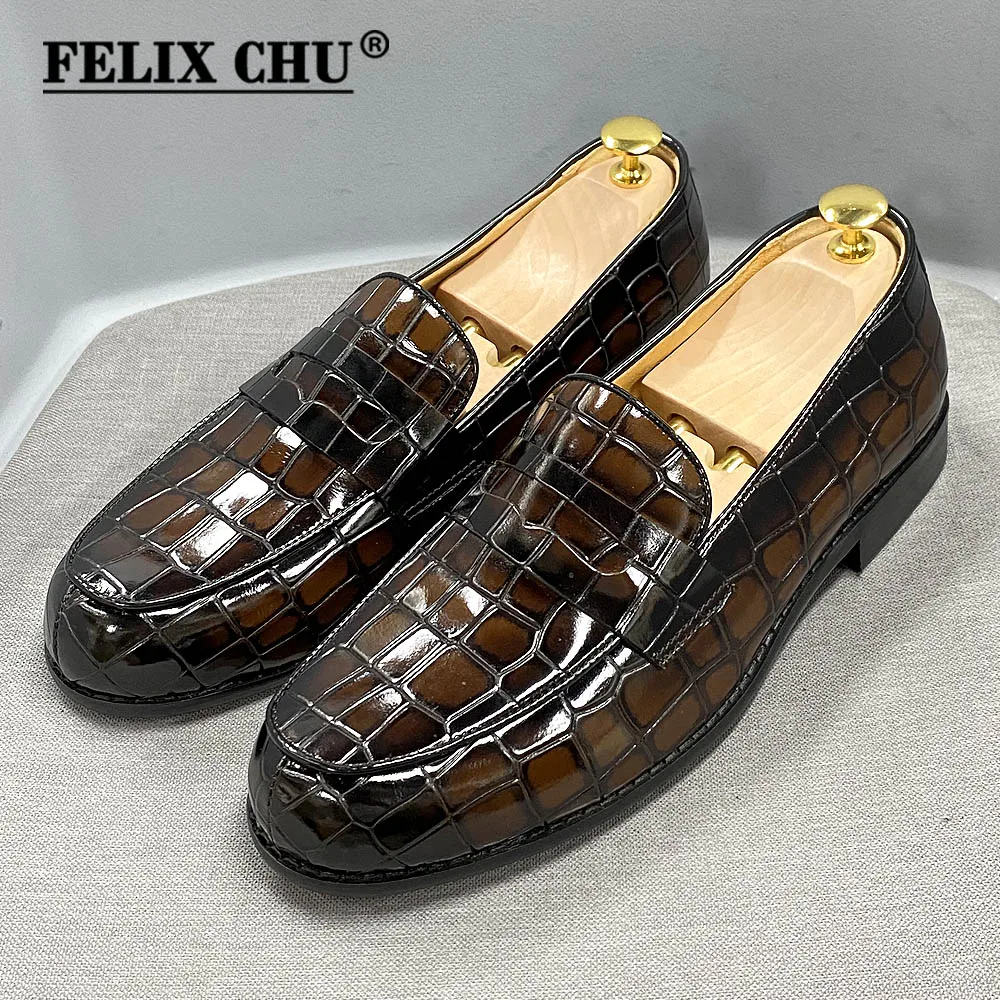
Situational Factors: When Care Difficulty Changes
While leather is generally easier to maintain than suede, certain situations can shift this balance or increase the maintenance needs of both materials. Understanding these factors helps you make more informed decisions about which material might work better for your specific circumstances.
Climate plays a significant role in determining maintenance requirements. In rainy regions, suede becomes particularly high-maintenance, requiring frequent protection and careful storage. Conversely, in very dry climates, leather may need more regular conditioning to prevent cracking, somewhat increasing its care needs.
Usage patterns also impact maintenance difficulty. For daily-wear items exposed to various conditions, the gap in maintenance difficulty widens – suede becomes much more demanding than leather. However, for special occasion items worn infrequently in controlled environments, the care difference becomes less significant.
The quality of the materials can substantially affect maintenance requirements. High-quality suede with proper finishing may be more resilient than poor-quality leather that cracks or peels easily. Premium leather goods like women’s leather heeled loafers from reputable manufacturers often incorporate better protective finishes that further simplify maintenance.
Color significantly influences visible maintenance needs, especially for suede. Light-colored suede shows dirt and stains much more readily than dark suede, drastically increasing apparent maintenance requirements. With leather, color differences have less impact on care difficulty, though light colors still show dirt more easily than dark ones.
Special treatments can also change typical care patterns. Some modern suede features enhanced water and stain resistance, while certain leather finishes may require specific care products to maintain their appearance.
Common Mistakes to Avoid with Both Materials
Whether you’re caring for leather or suede, certain mistakes can cause lasting damage regardless of the material. Being aware of these common errors helps preserve the beauty of both types of footwear and accessories.
Mistakes that damage both materials:
- Using harsh household cleaners or regular soaps that strip natural oils and protective finishes
- Exposing items to prolonged direct sunlight, which causes fading and drying
- Storing in plastic bags that prevent air circulation and can lead to mildew
- Using excessive heat for drying, which can cause shrinking, warping, or cracking
- Ignoring stains and spills that become more difficult to remove over time
- Wearing items in inappropriate conditions (heavy rain, mud, etc.) without proper protection
Material-specific mistakes:
For leather:
* Over-conditioning, which can make the surface sticky or darken the color
* Using silicone-based products that build up and damage the finish over time
* Applying polish without cleaning first, trapping dirt beneath the polish layer
* Using products designed for one leather type on another (e.g., suede protector on smooth leather)
For suede:
* Brushing too aggressively or against the nap direction, damaging the texture
* Using leather creams or conditioners that permanently mat the surface
* Scrubbing wet stains, which spreads the stain and damages nap
* Fully submerging in water when cleaning
Choosing women’s flat classic loafers in either material represents an investment in quality footwear that deserves proper care. By avoiding these common mistakes, you’ll significantly extend the life and appearance of your favorite items.
Professional Care: When to Seek Expert Help
While routine maintenance can be handled at home, certain situations call for professional leather or suede care services. Knowing when to seek expert help can save treasured items from permanent damage.
For leather items, consider professional help when:
* Deep cracks have developed in the surface
* The color has faded significantly or unevenly
* Oil or grease stains have penetrated deeply
* The leather has hardened and doesn’t respond to conditioning
* Mold or mildew has developed due to improper storage
For suede, professional cleaning becomes necessary when:
* Water has caused severe staining or color bleeding
* Oil stains have set in despite home treatment attempts
* The nap has become severely matted or damaged
* Extensive dirt has become deeply embedded in the fibers
* The color has faded significantly and needs restoration
Professional leather and suede care typically involves specialized cleaning processes, reconditioning treatments, and in some cases, color restoration. These services generally cost between $25-100 depending on the item size and damage extent.
When selecting a professional service, look for specialists with specific experience in the type of leather or suede your item features. Ask about their process, expected results, and whether they guarantee their work against further damage.
Consider the item’s value – both monetary and sentimental – when deciding whether professional care is worthwhile. Often, quality items like designer footwear or heirloom leather goods justify the investment in professional restoration rather than replacement.
Should You Choose Leather or Suede Based on Care Requirements?
When deciding between leather and suede items, maintenance requirements should factor into your decision alongside aesthetic preferences. Your lifestyle, available time for care, and intended use for the item can help determine which material will better suit your needs.
For those with busy schedules and limited time for maintenance, leather generally represents the more practical choice. Its inherent resilience and simpler care routine make it better suited to hectic lifestyles where regular detailed maintenance isn’t feasible. Leather items can often go longer between care sessions without showing significant wear.
Those who enjoy frequent outdoor activities or live in rainy climates might find leather’s natural water resistance and easier cleaning particularly valuable. The ability to quickly wipe away most dirt and water exposure makes leather more forgiving in unpredictable environments.
On the other hand, suede offers unique aesthetic qualities that many find worth the additional maintenance. Its distinctive texture and rich depth of color provide a sophisticated appearance that smooth leather doesn’t replicate. For special occasion items or those used primarily in controlled environments, suede’s maintenance demands become less burdensome.
Some people actually enjoy the ritual of caring for fine materials. If you find satisfaction in maintaining your belongings, suede’s more involved care routine might be rewarding rather than troublesome. The visible improvement from proper brushing and cleaning can provide genuine satisfaction.
Consider specific use cases when deciding. For everyday office wear, women’s leather flat loafers might prove more practical, while suede versions could be reserved for special occasions when their appearance brings particular joy.
Is Suede Ever Easier to Care For Than Leather? (Breaking the Rule)
While leather is generally easier to maintain than suede, certain exceptions challenge this rule. Understanding these situations provides a more nuanced view of the maintenance comparison.
Some modern suede products now feature advanced protective treatments applied during manufacturing. These treatments create exceptional water and stain resistance that can significantly reduce maintenance requirements. When comparing such treated suede to untreated regular leather, the maintenance gap narrows considerably.
Certain specialty leathers actually require more intensive care than standard suede. For example, nubuck leather (which has a surface similar to suede but is made from the outer hide) and aniline leather (which has minimal protective coating) both demand careful maintenance that can exceed standard suede care requirements.
The quality factor can also invert the typical maintenance relationship. High-quality suede from premium manufacturers often has better fiber structure and protective elements than low-quality leather that may crack, peel, or stain easily. In these cases, the superior suede might actually require less maintenance over time.
Technological advances continue to improve suede’s resilience. New nano-coating technologies create microscopic barriers around individual fibers rather than just surface coatings, potentially revolutionizing suede’s resistance to staining and water damage.
These exceptions remain relatively rare in the broader market. For most consumer products, leather still maintains its general advantage in ease of care, but awareness of these exceptions helps inform more sophisticated purchasing decisions.
Can I Use the Same Products for Both Materials?
A common question among owners of both leather and suede items is whether care products can be shared between materials. The answer is generally no – most products are specifically formulated for either leather or suede due to their fundamentally different structures.
Using leather conditioners or creams on suede will almost certainly cause damage by matting the nap and creating oily patches that are nearly impossible to remove. The moisturizing agents designed to penetrate leather’s surface destroy suede’s distinctive texture.
Conversely, suede brushes can scratch finished leather surfaces, and suede cleaners may be too harsh for leather’s protective finish. Suede protector sprays aren’t formulated to bond properly with leather’s smoother surface, potentially leaving residue or an uneven appearance.
The few products that can work safely for both materials include:
* Some gentle dust brushes with very soft bristles (for initial dust removal only)
* Certain specialized water and stain repellent sprays specifically labeled as safe for both materials
* Some pH-balanced leather/suede shampoos designed for both materials
From a cost perspective, purchasing material-specific products is generally more economical than dealing with damage caused by using inappropriate products. The initial investment in separate care kits pays dividends in extended product life and maintained appearance.
For those maintaining collections including both materials, proper labeling of care products prevents accidental misuse. Creating separate care kits for leather and suede items eliminates confusion and potential damage.
How Climate and Weather Affect Your Material Care Routine
Environmental conditions significantly impact maintenance requirements for both leather and suede, often requiring adjustments to care routines based on seasonal changes and local climate patterns.
In humid environments, both materials face increased risks. Leather can develop mold or mildew if not properly dried and stored, while suede’s open fibers can trap moisture that promotes bacterial growth. In these conditions, ensuring proper air circulation during storage becomes particularly important, as does more frequent inspection for early signs of moisture damage.
Rainy regions present obvious challenges for suede, requiring much more frequent application of protector sprays before exposure. For both materials in wet climates, allowing thorough drying away from direct heat after exposure to moisture is crucial, though leather’s drying process is generally less complicated than suede’s.
Extremely dry climates create different challenges. Leather can dry out and crack without regular conditioning, while suede may become brittle and lose its soft hand feel. In desert environments, conditioning leather more frequently helps counteract this natural drying process.
Seasonal care adjustments should include:
* Winter: More frequent protection against salt and slush; regular cleaning to remove salt residue
* Summer: UV protection to prevent fading; more frequent cleaning to remove dust and sweat
* Spring/Fall: Transition protection based on rainfall patterns; thorough cleaning when switching between seasonal storage
Creating a seasonal care calendar helps ensure appropriate maintenance as conditions change throughout the year. For those in variable climates, this proactive approach prevents many common forms of material damage.
Frequently Asked Questions About Leather and Suede Care
Can suede be completely waterproofed?
While suede can be made significantly more water-resistant with quality protector sprays, it cannot be made completely waterproof while maintaining its natural texture and appearance. Even the best protective treatments will eventually allow water penetration with prolonged exposure. Frequent reapplication of protector sprays provides the best defense against water damage.
How do I restore faded leather or suede?
For leather, specialized color restoration products can help revive faded areas. These should be matched carefully to the original color and applied in thin layers. For suede, professional color restoration is usually the best option, as DIY approaches often result in uneven coloring or texture changes. Some specialized suede dyes exist but require careful application.
Can I use household products for emergency cleaning?
In true emergencies, some household products can help with immediate treatment until proper cleaning is possible. For leather, a solution of mild soap and water can remove surface dirt (followed by proper conditioning). For suede, cornstarch can absorb fresh oil stains, and a clean pencil eraser might help with small marks. However, these should only be temporary solutions until appropriate products can be used.
How do I remove winter salt stains?
For leather, wipe with a cloth dampened with a solution of equal parts water and white vinegar, then follow with conditioning once dry. For suede, use the same solution applied with a barely damp cloth, dabbing gently rather than rubbing, then allow to dry completely before brushing to restore the nap.
Is it worth repairing damaged leather or suede?
Quality leather and suede items often justify professional repair, especially if the damage is localized and the item is otherwise in good condition. Professional leather repair can address cracks, tears, and color damage, while suede specialists can sometimes restore nap and texture. The item’s value, both monetary and sentimental, should guide this decision.
By understanding these common concerns and their solutions, you’ll be better equipped to maintain both leather and suede items in your collection, ensuring they remain beautiful and functional for years to come.

